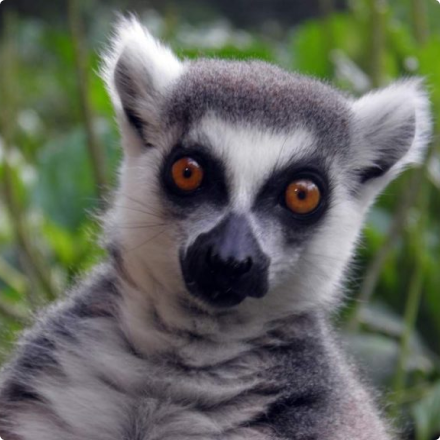More than 90% of lemur species are endangered and might face extinction in the nearest future. Watch the ring-tailed lemurs play and climb in this soothing setting and support them by donating for the fruits they adore.
Quick Donate
DID YOU KNOW?
A ring-tailed lemur mob will gather in open areas of the forest to
sunbathe. They sit in what some call a "yoga position" with their
bellies toward the sun and their arms and legs stretched
out to the sides.
Common name:
Ring-Tailed Lemur
Scientific name:
Lemur catta
Type:
Mammals
Size:
Head and body: 17.75 inches; tail: 21.75 inches
Diet:
Herbivore
Habitat:
Arid, open areas and forests

Ring-tailed lemurs are named for the 13 alternating black and white
bands that adorn their tails. Unlike most other lemurs, ringtails
spend 40 percent of their time on the ground, moving quadrupedally
along the forest floor. Ring-tailed lemurs live in southwestern
Madagascar, in arid, open areas and forests in territories that range
from 15 to 57 acres (0.06 to 0.2 square kilometers) in size. As with
all lemurs, olfactory communication is important for ringtails.
Ring-tailed lemurs have scent glands on their wrists and chests that
they use to mark their foraging routes. Ringtails eat leaves, flowers
and insects. They can also eat fruit, herbs and small vertebrates.
Females usually give birth to their first baby when they are three
years old, and usually once a year every year after that. All adult
females participate in raising the offspring of the group. The median
life expectancy for a
ring-tailed lemur
is about 16 years.